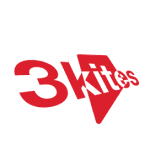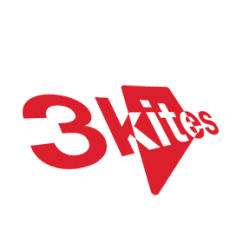Case management: How to migrate from your legacy system according to 3Kites
In May, 2024, my colleague, Bob Hadingham, and I met with three leading case management vendors along with a data migration specialist company, all prominent within the legal sector. The meeting was motivated by ‘The Perfect Storm 2’, the inevitable end-of-life within a relatively short time span for a number of case management tools which are often bundled with practice and document management (we call these Full Practice Management Systems) and which will need to be replaced.
We experienced an earlier ‘Perfect Storm’ (as coined by Bob in 2015) when 3Kites was visiting various cities with a seminar highlighting the number of PMS products that were coming towards the end-of-life and how to prepare for this. In both cases, the easier part is evaluating the market to find a replacement, albeit that the choice for Full Practice Management Systems (FPMS) is more limited than it was 15 or so years ago.
Once a decision is made on what to replace legacy systems with, the hard work really starts. The implementation is likely to be complex (especially with the transition to cloud and SaaS platforms) and generally takes longer and costs more than people expect, although strong, independent project management can help to reduce the risks here.
A move to a new document management platform is fundamentally a content migration process, albeit one that should include the application of (newly created?) retention policies to reduce the number of documents and emails needing to be moved – this also helps with GDPR. The PMS migration requires processes to be created and transactions to be tested alongside static data – this usually includes the greatest number of moving parts (file opening, time capture, billing, accounting, reporting, etc).
However, the biggest challenge is often overlooked or insufficiently considered, ie the change of a Case Management System (CMS). This is where years of the firm’s IP has been coded into worktype specific flows to help with the likes of insurance defence, clinical negligence, plot sales and debt recovery. With many such worktypes, law firms are simply unable to compete unless they have a CMS tool.
The first issue here is the coding of case flows in the new system. These need to be analysed and process mapped to understand key objectives and to update flows to take advantage of newer functionality. This is no small task and will either require A) parallel running whilst flows are moved across, or B) a lengthy (depending on the number of flows involved) implementation project which allows those flows required on day-1 to be written and tested. Many firms push for the latter in an
effort to escape the increasing maintenance costs and decreasing support capabilities which seems to attend some of the FPMSs that are moving towards the end of development.
Migrating case-related data is a similar challenge to that for the PMS, although it needs to allow for historical status settings to be moved across at the same time so that reviews of cases can show what happened and when. It also needs to align legacy and replacement systems so that active cases can continue in the new system from exactly the same point and with exactly the same status as they left the legacy CMS.
One option is to write a single-use tool which gathers the relevant status settings and data from the old CMS and moves these into the new one such that every case simply picks up from the correct point. However, the complexity of such a tool will only increase with every flow that the firm has whilst needing to reflect any changes in logic or status flagging from the old to the new – as you might imagine, the capacity for errors is high.
In our conversations with vendors, Bob and I agreed that the most sensible option was for data to be migrated but for users (i.e. lawyers and case handlers) to manually set the status of each case they are managing to ensure that these are lined up correctly and that vital steps were not missed or duplicated. This approach would benefit from a user-specific report run on the legacy system which helps to speed the process of checking and setting in the new one.
In writing this, I am mindful of the need to acknowledge the specifics of each firm’s transition which, in some cases, may be better served by writing a tool, especially where there are a limited number of case flows or worktypes. The bottom line here is to be prepared – take the time to define and agree a strategy with both internal teams and the new supplier. Those that choose to skip this step are likely to be heading for a painful, and potentially failed implementation.
Our thanks to the vendors that kindly contributed to the discussion in May, 2024 and who have continued to discuss the challenges here with a genuine desire to improve things for their customers. From the 3Kites’ perspective, we want our clients to benefit from the best practice that is available and also want to thank those law firms that have contributed to discussions along the way.
3Kites provides assistance to firms of all sizes with CMS (and FPMS, PMS, DMS) product evaluations and selections, implementation preparations, migration planning and project management.



